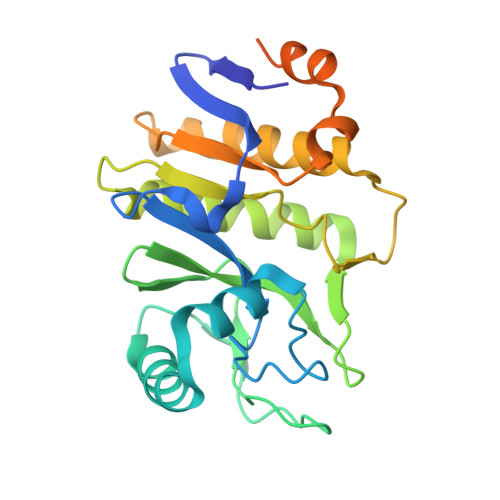TIR domains produce histidine-ADPR as an immune signal in bacteria.
Sabonis, D., Avraham, C., Chang, R.B., Lu, A., Herbst, E., Silanskas, A., Vilutis, D., Leavitt, A., Yirmiya, E., Toyoda, H.C., Ruksenaite, A., Zaremba, M., Osterman, I., Amitai, G., Kranzusch, P.J., Sorek, R., Tamulaitiene, G.(2025) Nature 642: 467-473
- PubMed: 40307559
- DOI: https://doi.org/10.1038/s41586-025-08930-2
- Primary Citation of Related Structures:
8R66, 8V3E, 9EIB - PubMed Abstract:
Toll/interleukin-1 receptor (TIR) domains are central components of pattern recognition immune proteins across all domains of life 1,2 . In bacteria and plants, TIR-domain proteins recognize pathogen invasion and then produce immune signalling molecules exclusively comprising nucleotide moieties 2-5 . Here we show that the TIR-domain protein of the type II Thoeris defence system in bacteria produces a unique signalling molecule comprising the amino acid histidine conjugated to ADP-ribose (His-ADPR). His-ADPR is generated in response to phage infection and activates the cognate Thoeris effector by binding a Macro domain located at the C terminus of the effector protein. By determining the crystal structure of a ligand-bound Macro domain, we describe the structural basis for His-ADPR and its recognition and show its role by biochemical and mutational analyses. Our analyses furthermore reveal a family of phage proteins that bind and sequester His-ADPR signalling molecules, enabling phages to evade TIR-mediated immunity. These data demonstrate diversity in bacterial TIR signalling and reveal a new class of TIR-derived immune signalling molecules that combine nucleotide and amino acid moieties.
- Institute of Biotechnology, Life Sciences Center, Vilnius University, Vilnius, Lithuania.
Organizational Affiliation:


















